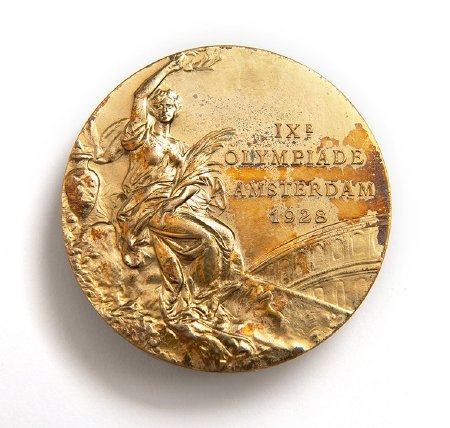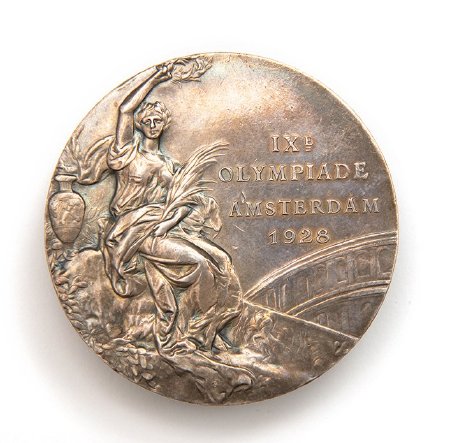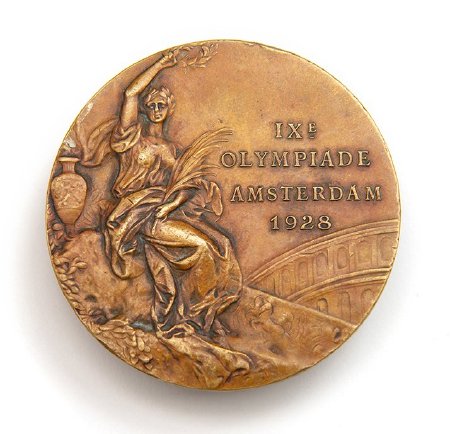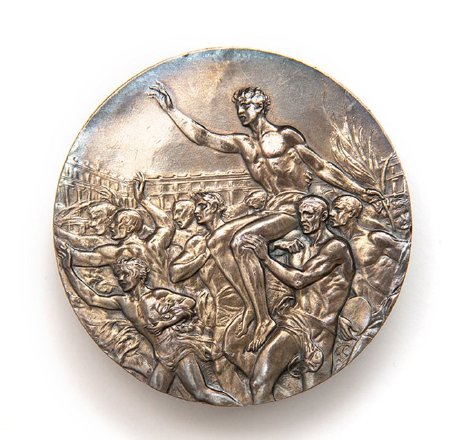Description:
Olympic Games Amsterdam 1928 Medals
Front: Seated Nike, goddess of victory, holding laurel wreath and palm branch, Colesseum in background
Back: Victorious athlete with palm branch carried by jubilant athletes, stadium in background
Designer: Giuseppe Cassioli
Mint: Dutch State Mint, Utrecht, Netherlands
Front: Seated Nike, goddess of victory, holding laurel wreath and palm branch, Colesseum in background
Back: Victorious athlete with palm branch carried by jubilant athletes, stadium in background
Designer: Giuseppe Cassioli
Mint: Dutch State Mint, Utrecht, Netherlands
Title:
Amsterdam 1928
Fun fact(s):
In only her fourth meet, Betty Robinson became the first female Olympic track and field champion when she won the 100-meter. Robinson was severly injured in a plane crash in 1931 yet came back to win her second gold medal in the women's 4x100-meter at the 1936 Games.
There was no Olympic Village for the Amsterdam 1928 Games; most international teams were boarded on ships moored in Amsterdam Harbour.
There was no Olympic Village for the Amsterdam 1928 Games; most international teams were boarded on ships moored in Amsterdam Harbour.
More Info:
The Amsterdam 1928 medals were designed by Italian artist Guiseppe Cassioli, winner of the International Olympic Committee-sponsored contest to create permanent Summer Games prize medals. The design represents the concepts of victory, brotherhood and universality. Medals were awarded in both sport competitions and art competitions.
From this point forward, the IOC specified the physical parameters of Summer Games prize medals: diameter must be greater than 50 millimeters, thickness at least 3 millimeters, gold gilding must equal 6 grams, and silver must be 925/1,000 fine.
From this point forward, the IOC specified the physical parameters of Summer Games prize medals: diameter must be greater than 50 millimeters, thickness at least 3 millimeters, gold gilding must equal 6 grams, and silver must be 925/1,000 fine.



